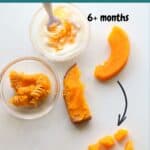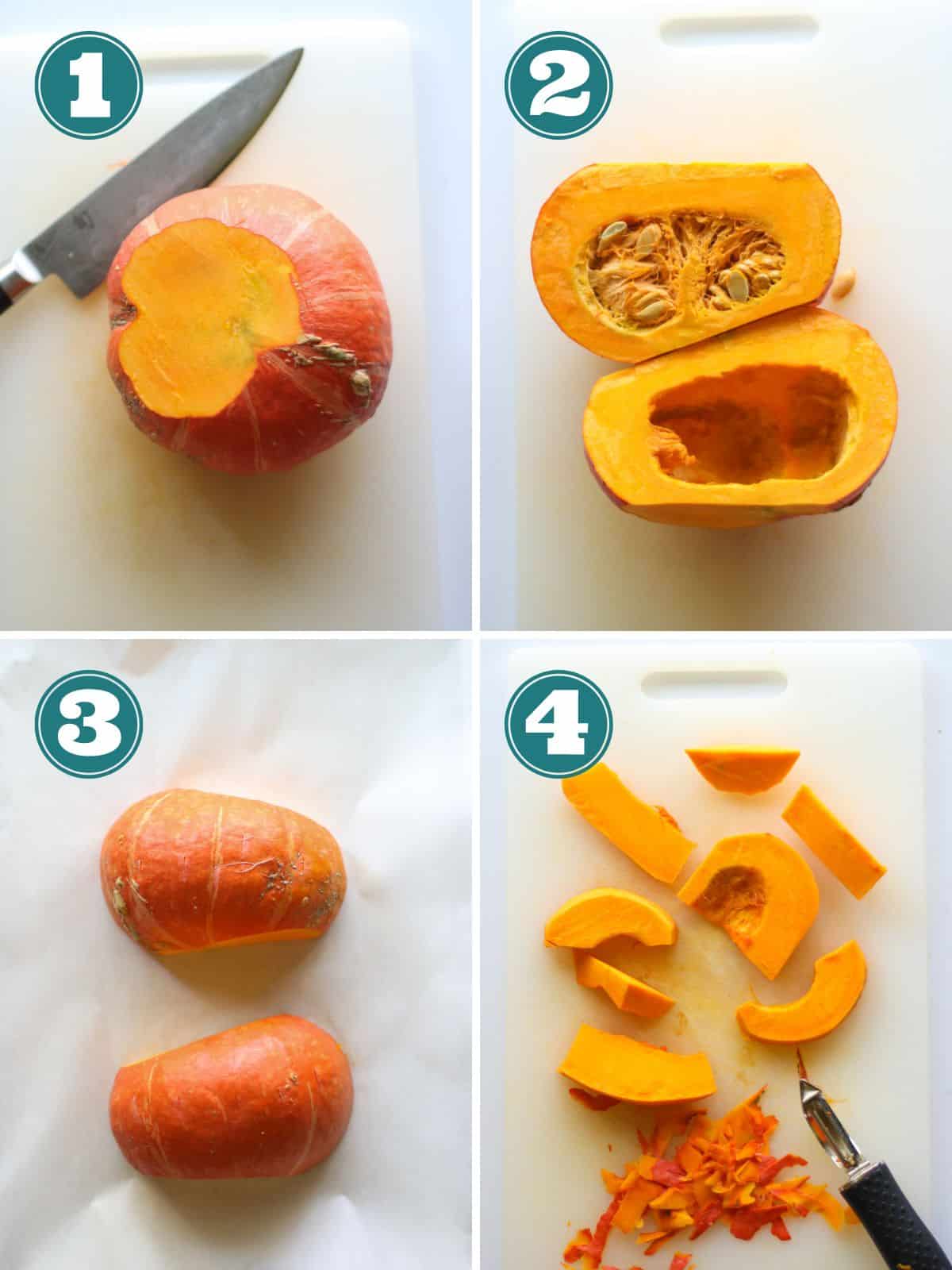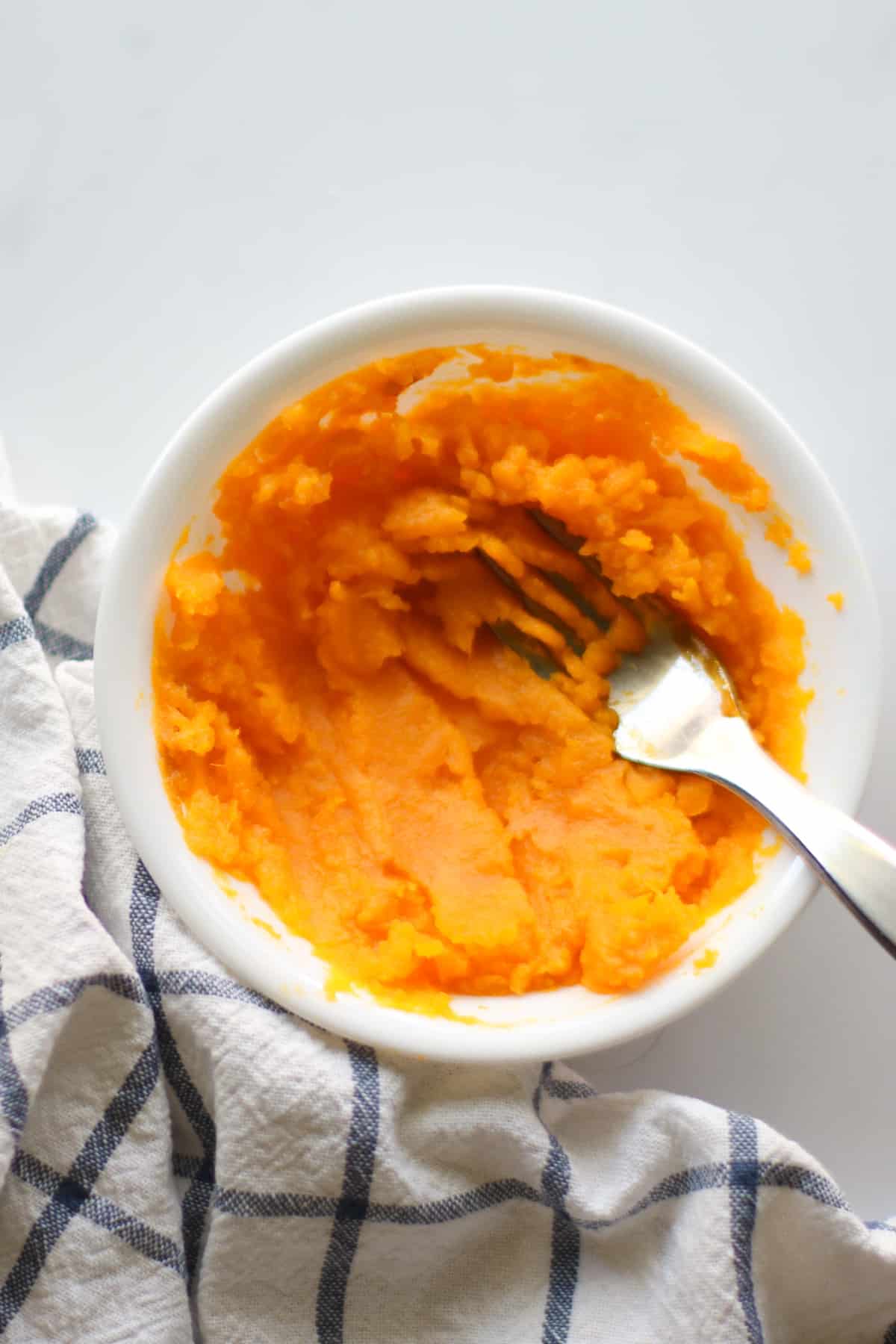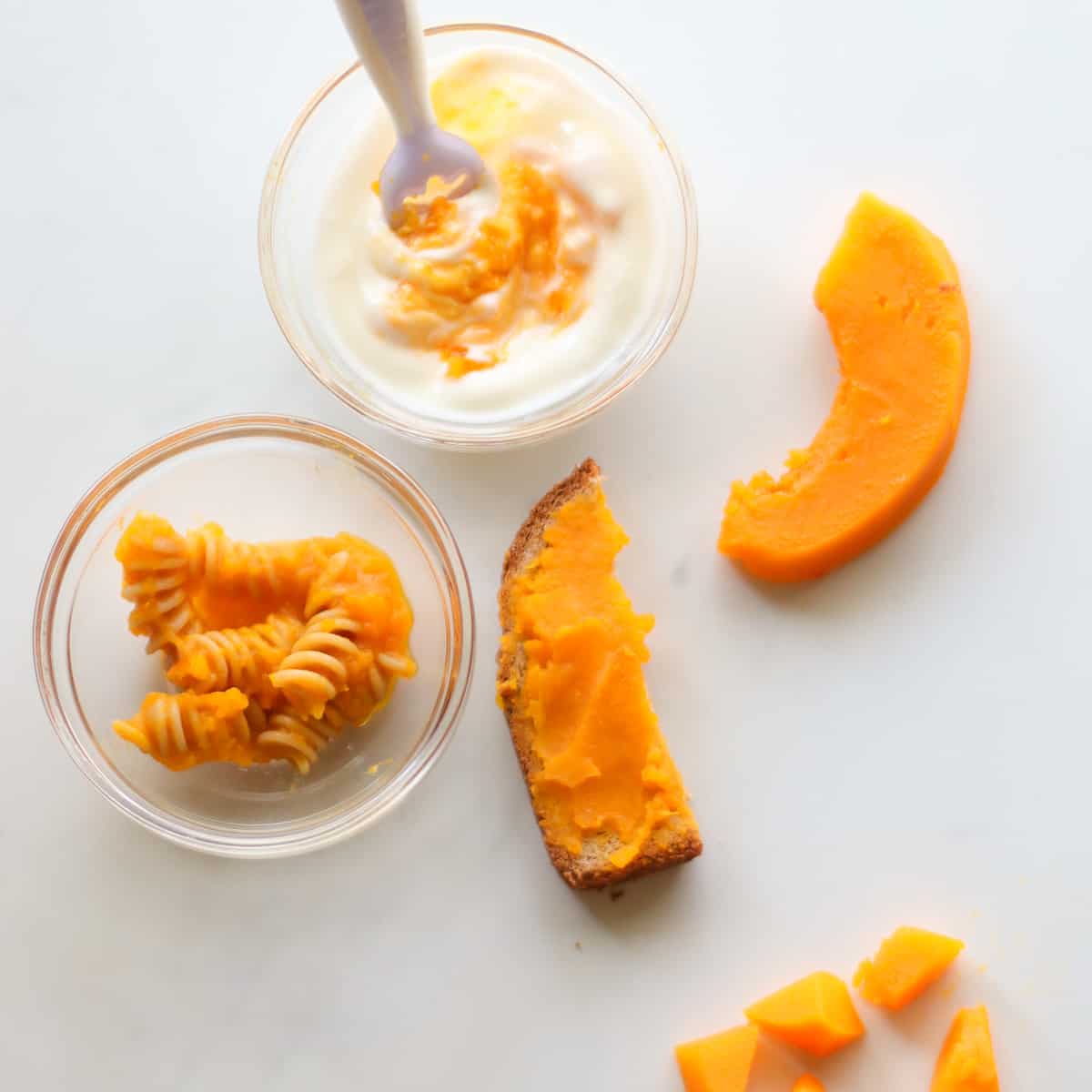When can babies eat pumpkin?
This nutritious vegetable can be offered to babies as soon as they’re ready to start solids, usually around 6 months. It’s important to remember that your baby is unique and that rather than going by the calendar, you need to make sure your baby is DEVELOPMENTALLY ready to start solids. If you’re unsure, be sure to grab my FREE handout by clicking on the box below.
Health Benefits
Interesting fact! Pumpkin is technically a fruit because it contains seeds, just like avocados, tomatoes, butternut squash, and spaghetti squash.
It’s not only delicious and versatile, but it is also loaded with vitamins, minerals, and antioxidants.
They’re particularly high in:
Vitamin A – important for eye and bone health and immune function Vitamin C – helps boost immunity and enhances iron absorption Magnesium and potassium – aid in optimal bone health and hear thealth
As with sweet potatoes, carrots, and butternut squash, its bright orange color is due to antioxidants called carotenoids, which get converted into vitamin A. Carotenoids are fat-soluble compounds, so they are best absorbed with fat. Last but not least, it’s also a great source of both soluble and insoluble fiber.
Are pumpkins safe for babies?
As long as they are offered in an appropriate size and texture, it is safe. Let me show you how! Pumpkin allergy is very rare as well.
Selecting the Best Pumpkin
Fresh
There are more than 100 types of pumpkin, and while they are all technically edible, the big carving pumpkins tend to be quite watery and stringy once cooked. The ones you want to use for cooking are sugar pumpkins (also called pie or sweet pumpkins). These are small and round. I’ve found that ones that are between 2-5 pounds have the best flesh. Other delicious ones to try are Japanese Kabocha or Red Kuri Pumpkin (what’s pictured here)! They are my absolute favorites. To select the best pumpkin, first look at the stem. It should be dark green, dry, and firmly attached to the fruit. Do NOT pick the pumpkin up by its stem as you want it to remain intact! Then thoroughly inspect the skin for any deep bruises or soft spots. It should be firm. Don’t forget to look at the bottom of the pumpkin. As for the color, don’t chase after the brightest color. In fact, a more dull hue indicates that it’s aging and the flesh is getting sweeter and more delicious. Do make sure that the color is uniform without any bruises or blemishes. Once you bring home the awesomest pumpkin, keep it in a cool, dry place.
Canned
You can also serve canned pumpkin to your baby! In fact, I highly encourage it as we need all the short cuts we can get, right? Be sure that the can is BPA free. Note: 1 1/2 pounds of fresh pumpkin will yield about 1 1/2 cups of pumpkin puree, which is about how much is in a 15-ounce can of pumpkin. Healthy Recipes with Pumpkin Puree
How to Cut Pumpkin
First, rinse the pumpkin under running water to remove any dirt. Pro tip: microwave on high for 2-3 minutes to make it easier to cut. Tightly wrap any leftover pumpkin, refrigerate, and use within 5 days.
Top Cooking Methods
Roasted
This is my favorite method of the ease of preparation and results in incredible flavor. Not to mention, cooking with oil will aid in the absorption of vitamin A, a fat-soluble nutrient.
Steamed
Boiled
I don’t recommend it as most of the nutrients will leach into the water.
How to serve Pumpkin to Babies
6-9 months old
Pureed – Add cooked pumpkin into a blender and blend until smooth. Add breastmilk/formula, water, or even broth to thin out to desired consistency. It shouldn’t need it though. You can also just mash with a potato masher or a fork, which is what I do most of the time. Here are some easy and versatile ways to serve pumpkin puree to your baby. Simply stir into:
Homemade baby oatmeal Quinoa Lentils Chia Pudding Overnight oats/quinoa Toast Yogurt – try this pumpkin yogurt
9+ MONTHS OLD
In addition to the suggestions above, as your baby develops their pincer grasp and is able to pick up small pieces of food using their thumb and forefinger, you can cut into small, bite-sized pieces. I still suggest continuing to offer larger pieces so they can practice taking bites. If you haven’t already, this is a good time to introduce utensils. Your baby will most likely just play around or toss it. But it’s still great for exposure! Try forking a piece of squash and plate on their plate. Be sure to continue modeling. They are like sponges and learn by watching you! I also encourage you to offer mixed foods often before your baby becomes more selective. If they’ve never had foods touching and mixed together, it will be much harder to get them to eat these later on.
Pumpkin Recipes for Babies
If you want to learn how to prepare other specific food(s), check out my How To Series!














